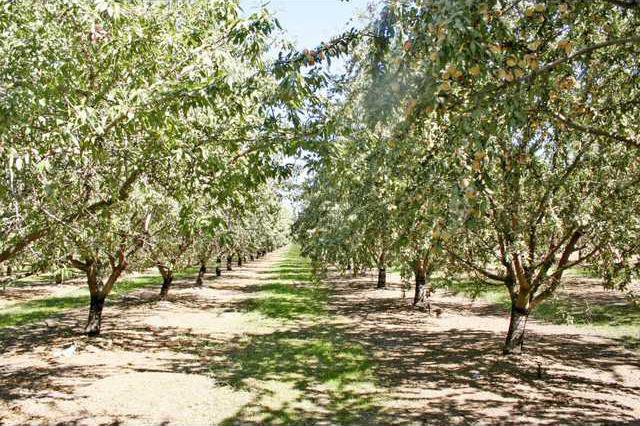Across nearly all measures, farm sector profitability is forecast to decline for the second straight year. Net cash income is forecast at $100.3 billion, down about 21 percent from 2014 levels. Lower crop and livestock receipts are the main drivers of the change in 2015 net cash farm income from 2014, while cash production expenses are projected down by 1.1 percent. Net farm income is forecast to be $58.3 billion in 2015, down 36 percent from 2014’s estimate of $91.1 billion. The 2015 forecast for net farm income would be the lowest since 2006 (since 2002 in inflation-adjusted terms) and a drop of nearly 53 percent from the record high of $123.7 billion in 2013. As a measure of profitability, net cash farm income is generally less variable over time than the broader net farm income measure. One explanation is that it is possible to exercise greater control on the timing of cash receipts and expenses and thereby moderate large swings from year to year.
"Today's farm income forecast is heartening for all Americans. The past several years have seen unprecedented highs in farm income, and despite the fact that farm income is forecast to be down from record levels, today's projections provide a snapshot of a rural America that continues to remain stable and resilient in the face of the worst animal disease outbreak in our nation's history and while the western United States remains gripped by drought. Thanks to its ability to be competitive through thick and thin, American agriculture remains fundamentally sound, supporting and creating good-paying American jobs for millions," said Ag Secretary Tom Vilsack.
Crop receipts for 2015 are expected to decrease by $12.9 billion (6.2 percent) in 2015, led by a projected $7.1-billion decline in corn receipts, $3.4 billion in soybean receipts, and $1.6 billion in wheat receipts compared to 2014. Livestock receipts are forecast to decrease by $19.4 billion (9.1 percent) in 2015 largely due to lower milk and hog prices. Government payments are projected to rise 16 percent ($1.6 billion) to $11.4 billion in 2015. Total production expenses are forecast to decrease by $1.5 billion (less than 0.5 percent) in 2015.
Farm asset values are forecast to decline by 3.5 percent compared to 2014, and farm debt is forecast to increase by 5.8 percent. The farm sector equity measure combines both of these, and is down by $123.9 billion, or 4.8 percent compared to 2014. The primary driver of the drop in asset values is farm real estate, down $49 billion (2.1 percent). Debt is driven by increases in both real estate debt (up 5.3 percent) and nonreal estate debt (up 6.5 percent). While the movements in the balance sheet show an increasingly leveraged farm sector, financial risk ratios remain in acceptable ranges for now.
Highlights of the forecast:
Both net cash and net farm income are forecast to decline for the second consecutive year after reaching recent historic highs in 2013. Net cash income is expected to fall by 21 percent in 2015, while the forecast 36-percent drop in net farm income would be the largest since 1983 (in both nominal and inflation-adjusted terms). Crop receipts are expected to decrease by over 6 percent ($12.9 billion) in 2015, led by a forecast $7.1-billion decline in corn receipts, a $3.4-billion drop in soybean receipts, and a $1.6-billion drop in wheat receipts. Livestock receipts could fall by over 9 percent ($19.4 billion) in 2015, due to a forecast 29-percent drop in dairy and a 27-percent decline in hog receipts. Total production expenses are forecast to fall for the first time since 2009. Energy inputs and feed are expected to have the largest declines. Expenses are forecast to increase for labor, interest, and property taxes. Government payments are projected to rise 16 percent ($1.6 billion) to $11.4 billion in 2015. At $11.4 billion, 2015's payments would be the largest since 2010. Declining assets resulting from a modest decline in farmland values and higher debt are forecast to create a 4.8-percent decline in equity, the first drop since 2009. After several years of steady improvement, farm financial risk indicators such as the debt-to-asset ratio are expected to rise in 2015, indicating increasing financial pressure on the sector. However, debt-to-asset and debt-to-equity ratios remain low relative to historical levels.
Falling crop prices and receipts forecast for 2015, except for California fruits and nuts
The annual value of U.S. agricultural sector production is expected to fall to $435.2 billion in 2015, as both crop and livestock output decline. The falling value of crop production (to a forecast $186 billion in 2015) represents a second consecutive decline from 2013’s record high of $233.2 billion, and the third straight year of declining crop cash receipts despite a net inventory reduction. The value of U.S. livestock production is also forecast to decline (to $197.2 billion) in 2015 as a large drop in receipts more than offsets the sector’s inventory expansion.
Crop cash receipts are forecast to fall 6.2 percent in 2015, led by broad declines for many field crops. Corn cash receipts are expected to decline the most, falling by $7.1 billion in 2015. Since hitting a record high in 2012, corn receipts have fallen 35 percent. Corn prices are expected to fall further in 2015, while production is also expected to drop slightly relative to 2014. Cash receipts for soybeans and wheat are also expected to decline from 2014 on quantity and price forecasts that fall by 8.5 and 13.8 percent, respectively. Rice cash receipts are expected to decline by 21.9 percent on lower expected production and calendar-year prices.
Despite an expected decrease in production, cash receipts for fruits and nuts are expected to rise slightly in 2015 due to higher prices received by farmers. Production of grapefruits and oranges (particularly non-Valencia) are both expected to fall as citrus greening has been widely reported throughout Florida. Despite continued drought conditions, California citrus production has held steady or increased relative to 2014. California has historically accounted for a large portion of U.S. vegetable and fruit/nut cash receipts. According to the Census of Agriculture, 43 percent of U.S. fruit/nut and vegetable plantings are in California. For California’s vegetable, berry, and orchard production, the impacts from reduced off-farm surface water deliveries have been partially mitigated by increased use of groundwater.
California—the second largest rice producing state—is expected to experience the largest decrease in rice production as the drought continues to affect planted acreage and yield. Drought is also expected to reduce California’s cotton receipts, particularly the long-staple varieties in which it specializes. The 385,000 acres planted to rice in California in 2015 was about 30 percent below the long run average from the years before the current drought. Similarly but in more of a long-run shift, less irrigation for the water-intensive crop and higher returns for other crops have reduced California’s cotton acreage from over 1 million acres in the 1990’s to just 161,000 acres in 2015. Likewise, corn for silage, and hay have seen large acreage reductions, but only constitute a limited share of total farm income in California and the U.S.
Median income of farm operator households expected to dip in 2015
The median income of farm households has increased steadily over the past 5 years, peaking at an estimated $80,620 in 2014. However, farm household median income is forecast to decrease slightly in 2015, to $79,287. Given the broad USDA definition of a farm, many farms are not profitable even in the best farm income years. The projected median farm income of -$1,504 is lower than the 2014 estimate of -$869. Most farm households earn all of their income from off-farm sources—median off-farm income is forecast to increase 4 percent in 2015 to $72,494. (Note: Because they are based on unique distributions, median total income will generally not equal the sum of median off-farm and median farm income.)









